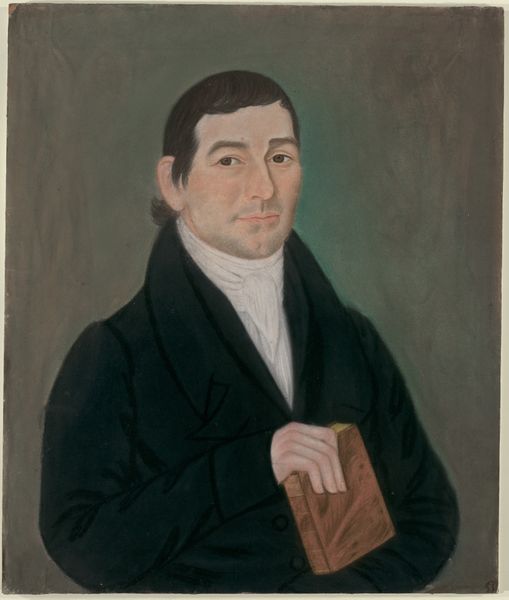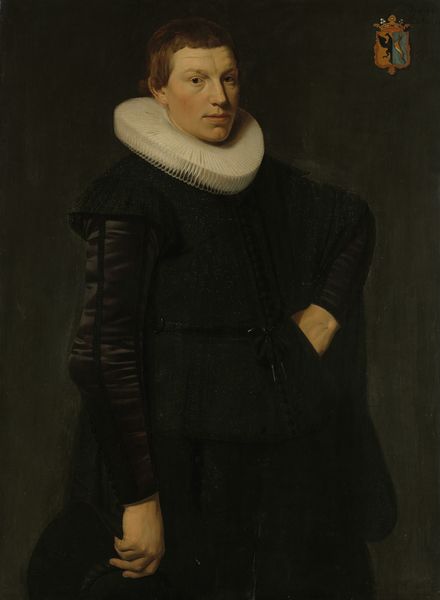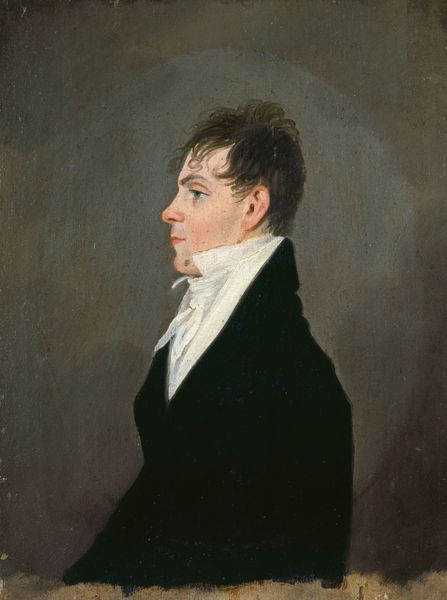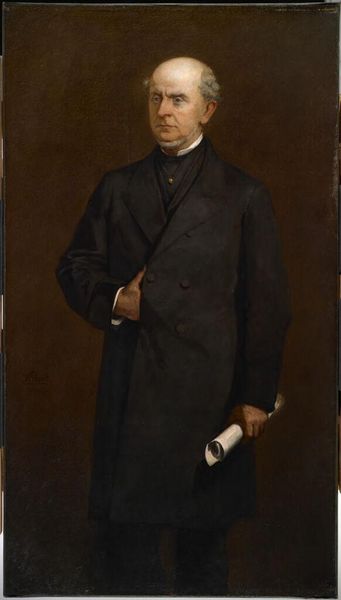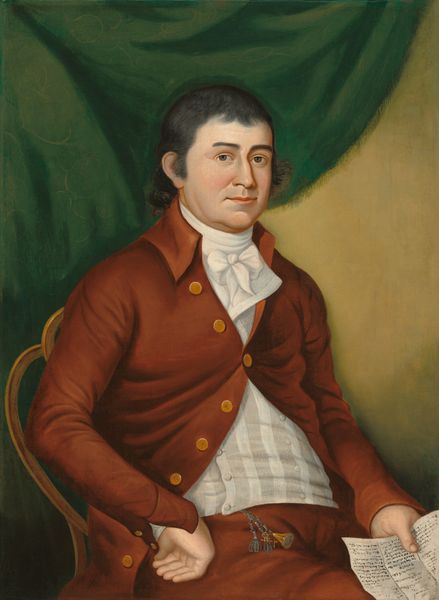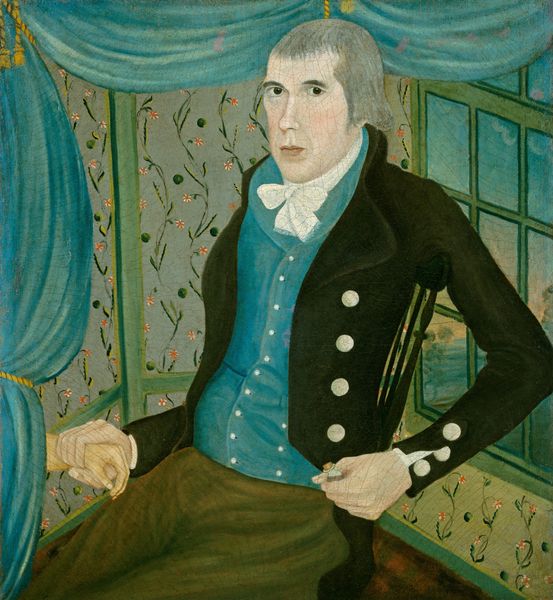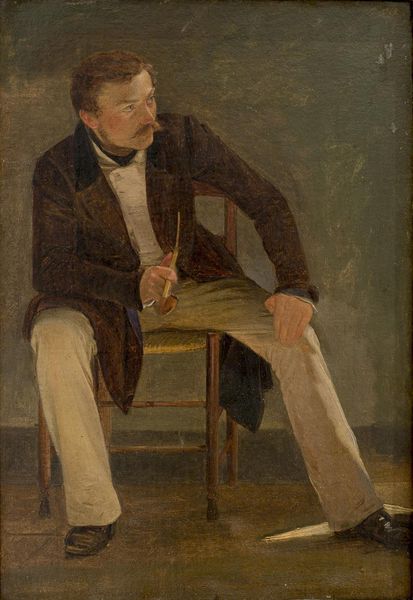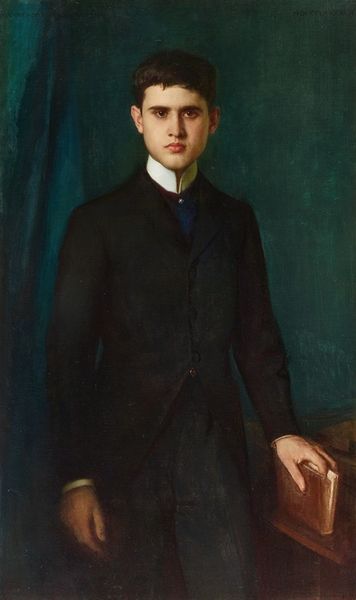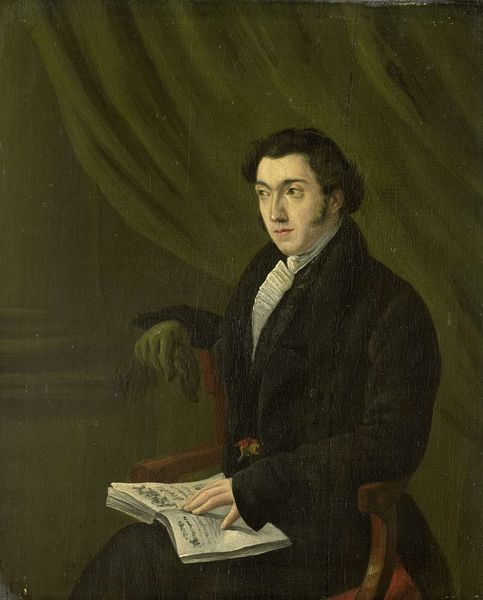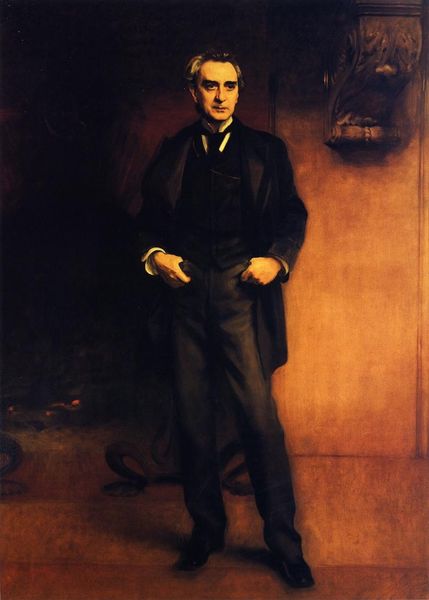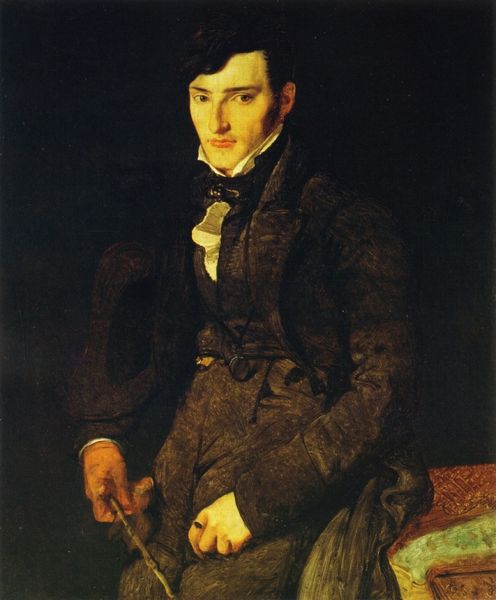
painting, oil-paint
#
portrait
#
painting
#
oil-paint
#
romanticism
#
realism
Dimensions: overall: 104.4 x 78.7 cm (41 1/8 x 31 in.) framed: 118.1 x 91.4 x 5.1 cm (46 1/2 x 36 x 2 in.)
Copyright: National Gallery of Art: CC0 1.0
Curator: Asahel Powers painted this portrait, believed to be William Sheldon, around 1831. Powers was a rather prolific itinerant painter of his time. What strikes you first about it? Editor: It has a peculiar flatness, wouldn't you agree? The artist's rendering of depth feels almost deliberately thwarted, especially given how the details in his collarbone pop so vividly from his pale face, contrasting with the deep, inky black of the coat. Curator: Exactly! Powers' portraits offer an incredible glimpse into the material conditions of early 19th-century America. His artistic choices likely reflect the limited availability of pigments and artistic training for someone working outside established art centers. We can see how that limitation creates interesting contrasts. Editor: Tell me more. That flatness has an almost unsettling effect when viewing the picture's depth. It heightens certain details while pushing others away. Look at the texture and lines of the face in contrast with that deep, opaque color. The artist's decision to capture this lack of roundness contributes to the realism. Curator: What interests me most about Powers is how his portraits served as markers of social identity within emerging communities. The sitters' garments, the objects they held like this beaver hat, even the books included here, weren’t just decorative but signified specific social roles and aspirations in this period. This tells you as much about this sitter's standing in the social milieu as about the formal decisions in capturing the man's likeness. Editor: I agree, but let us acknowledge the power of this realism, or that intent towards achieving verisimilitude: see the carefully constructed parallelism in the sitter's pose, a calculated artistic construct! The artist employs stark compositional organization alongside meticulous detail. It achieves, or rather it approaches an uncanny level of clarity and impact. It brings us back to questions about artistic decisions, the interplay of realism and artistry. Curator: So, it is a beautiful piece that illustrates not only this specific sitter's likeness, or his place in that particular period, but we can really assess the cultural history, production methods, and the economic structure, all embedded within the picture plane! Editor: Indeed. A fascinating dialogue emerges between the material context and the art itself, adding much complexity.
Comments
No comments
Be the first to comment and join the conversation on the ultimate creative platform.

